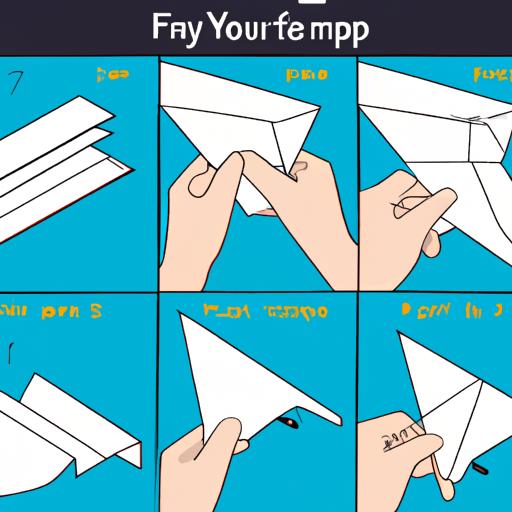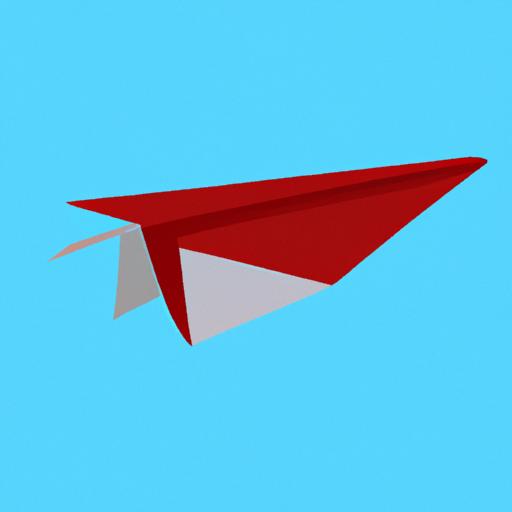How to Fold the Best Paper Airplane: A Step-by-Step Guide
Table of Contents
Are you looking to create the perfect paper airplane that soars through the air with ease? Look no further! With a few simple steps and some practice, you can fold the best paper airplane that will impress your friends and family.
Introduction

Folding paper airplanes is a fun and creative activity that has been enjoyed by people of all ages for many years. Not only is it a great way to pass the time, but it also helps to improve fine motor skills and hand-eye coordination. In this article, we will provide you with a step-by-step guide on how to fold the best paper airplane. We will also share some useful tips and tricks to help you master the art of paper airplane folding.
Materials Needed
Before we get started, let’s go over the materials you will need to create the best paper airplane. These materials are readily available and can be found in most households. You will need:
- A sheet of paper: Any type of paper can be used to fold a paper airplane. However, for best results, we recommend using a sheet of printer paper. It is lightweight, easy to fold, and flies well.
- A flat surface: You will need a flat surface to fold your paper airplane. A desk or table works well.
- Your hands: Your hands are the most important tool in this process. Make sure they are clean and dry before you begin folding.
Now that we have gone over the materials needed let’s move on to the next section.
The first step in folding the best paper airplane is to understand the basic folds used to create most paper airplane designs. These folds are easy to learn and can be executed by anyone, regardless of their experience level.
The Fold
The first fold is the most important fold in creating a paper airplane. To execute the fold, follow these steps:
- Take the top corner of the paper and fold it down to the bottom edge, forming a triangle.
- Make sure the edges are lined up, and then crease the paper along the fold.
- Unfold the paper.
The Valley Fold
The valley fold is another essential fold used in paper airplane folding. To execute the fold, follow these steps:
- Fold the paper in half, bringing the top edge to the bottom edge.
- Unfold the paper.
- Take the top corner and fold it down to the center crease, creating a triangle.
- Repeat on the other side.
- Fold the paper in half again along the center crease.
Now that you have learned the basic folds, let’s move on to the next section, where we will show you how to fold some of the best paper airplane designs.
Best Designs for Paper Airplanes
Now that you have mastered the basic folds, it’s time to move on to some of the best paper airplane designs. These designs are popular because they are easy to fold and fly well. Let’s take a look at some of them.
The Classic Dart
The Classic Dart is the most basic paper airplane design and is perfect for beginners. Here are the steps to fold it:
- Make a valley fold by folding the paper in half lengthwise.
- Unfold the paper, and then make a diagonal fold by bringing the top corner down to the bottom edge of the paper.
- Repeat step 2 on the other side.
- Fold the wings down by making a diagonal fold on each side. The wings should be parallel to the center crease.
- Fold the wings down again by making a diagonal fold on each side, but this time, the wings should be perpendicular to the center crease.
- Create an airfoil shape by folding the wingtips up about 1cm from the bottom edge of the wings.
The Hammerhead
The Hammerhead is an intermediate-level paper airplane design that is named after its unique shape. Here are the steps to fold it:
- Make a valley fold by folding the paper in half lengthwise.
- Unfold the paper, and then make a diagonal fold by bringing the top corner down to the center crease of the paper.
- Repeat step 2 on the other side.
- Fold the top corners of the paper down to the bottom edge of the paper, creating a triangular shape at the top of the paper.
- Make a diagonal fold on each side to create the wings. The wings should be angled slightly upward.
- Fold the wingtips down to create an airfoil shape.
The Nakamura Lock
The Nakamura Lock is a complex paper airplane design that is named after its creator, Ken Nakamura. Here are the steps to fold it:
- Make a valley fold by folding the paper in half lengthwise.
- Unfold the paper, and then make a diagonal fold by bringing the top corner down to the center crease of the paper.
- Repeat step 2 on the other side.
- Make a diagonal fold on each side to create the wings. The wings should be angled slightly downward.
- Fold the top corners of the paper down to the bottom edge of the paper, creating a triangular shape at the top of the paper.
- Unfold the triangular shape, and then make a horizontal fold by bringing the top edge of the paper down to the bottom edge.
- Fold the paper in half along the center crease.
- Fold the wings down to create an airfoil shape.
Tips and Tricks for Folding the Best Paper Airplane
Now that you have learned how to fold some of the best paper airplane designs, here are some tips and tricks to help you create the perfect paper airplane every time.
Use the Right Paper
Using the right paper is essential for creating a paper airplane that flies well. We recommend using printer paper, as it is lightweight and easy to fold. Avoid using heavy cardstock, as it will not fly as well.
Practice Makes Perfect
Like any skill, folding paper airplanes takes practice. Don’t be discouraged if your first few attempts don’t turn out as expected. Keep practicing, and you will get better over time.
Experiment with Designs
Don’t be afraid to experiment with different paper airplane designs. Try folding different shapes and sizes to see which ones fly the best.
Adjust the Wings
If your paper airplane is not flying well, try adjusting the wings. Bend them up or down slightly to see if this improves the flight.
Have Fun!
Most importantly, have fun! Folding paper airplanes is a fun and creative activity that can be enjoyed by people of all ages. So, grab some paper and start folding!
Tips and Tricks for Folding the Best Paper Airplane
Now that you have learned the basic folds and some best paper airplane designs, here are some tips and tricks to consider when folding the best paper airplane:
-
Use a clean, flat surface: To ensure that your paper airplane is as precise as possible, use a clean, flat surface to fold it. This will help avoid any wrinkles or imperfections in the paper.
-
Use a ruler: If you want to create a more precise airplane, use a ruler to help measure your folds. This will help ensure that your folds are straight and even.
-
Experiment with different designs: Don’t be afraid to try out different paper airplane designs to find the one that works best for you. Try out different shapes and sizes to see which one flies the farthest and fastest.
-
Adjust the wings: If your paper airplane isn’t flying straight or isn’t flying far enough, try adjusting the wings. Bend them up or down slightly to see if that helps improve its flight.
-
Practice, practice, practice: Like anything, the more you practice folding paper airplanes, the better you will become. Don’t get discouraged if your first few attempts don’t turn out as well as you hoped. Keep practicing, and soon you’ll be able to fold the best paper airplane with ease!
Conclusion
In conclusion, folding the best paper airplane is a fun and creative activity that anyone can enjoy. By following the step-by-step guide we provided, experimenting with different designs, and practicing your folding skills, you can create a paper airplane that flies with ease and impresses everyone around you. Remember to use a clean, flat surface, adjust the wings as needed, and most importantly, have fun! With a little bit of patience and practice, you’ll be able to fold the best paper airplane in no time.

